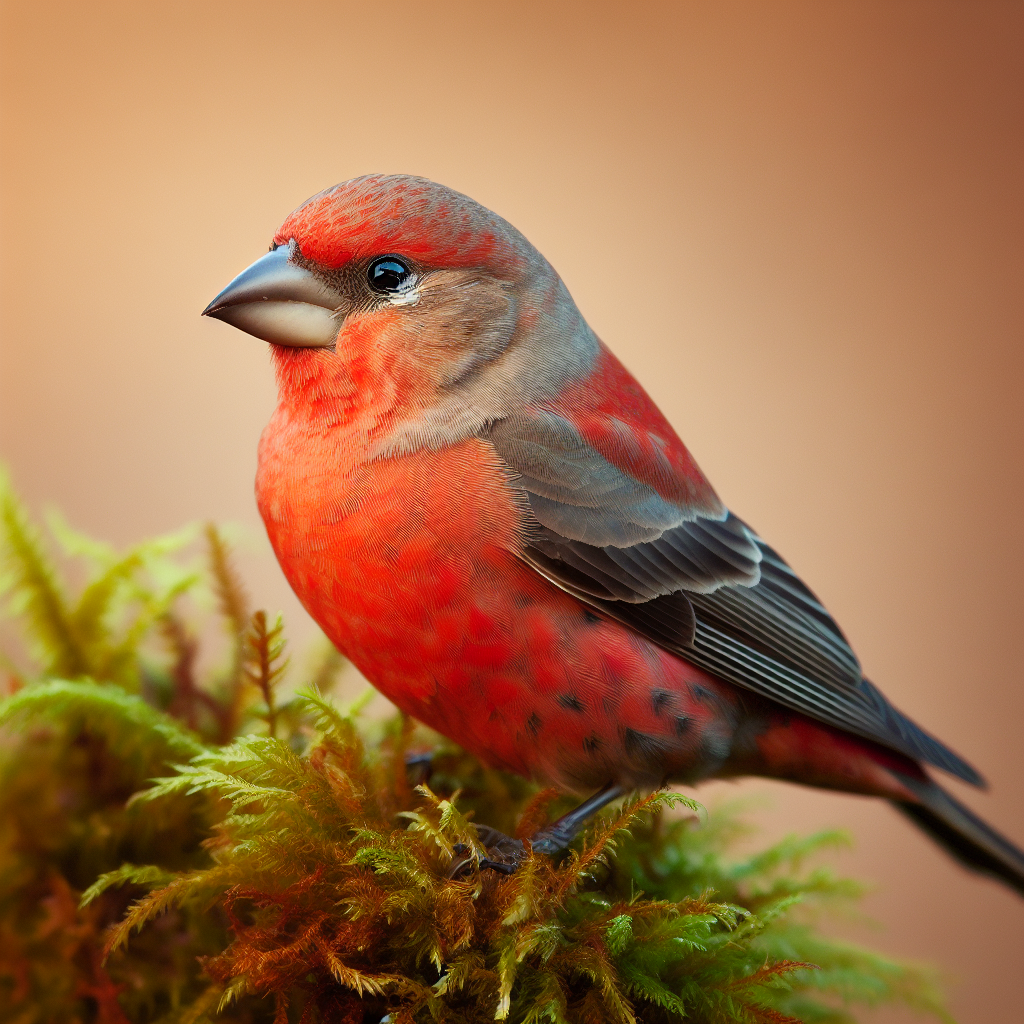Most beautiful small birds - Sykalo Eugen 2024
Red Crossbill (Loxia curvirostra)
Identification:
- Species name: Red Crossbill
- Scientific name: Loxia curvirostra
- Family: Fringillidae (Finches)
- Order: Passeriformes (Songbirds)
- Subclass: Neornithes (Modern birds)
- Class: Aves (Birds)
Description:
- Size: Medium-sized Finch, about 15-17 cm (5.9-6.7 in) long with a wingspan of 27-33 cm (10.6-13 in).
- Body shape: Stocky and robust, with a thick neck, a short, forked tail, and the defining feature — crossed mandibles specially adapted for extracting seeds from cones.
- Plumage color:
Males: Brick red breast and rump, contrasting with their brown wings and back and streaked underparts. Head is often a deeper red or even crimson.
Females: Duller overall than males, with less extensive red and more streaking on the underparts. Head is usually brown or grayish.
Short, crossed mandibles, reddish-brown or black.
Strong, dark gray legs.
Dark brown eyes.
Behavior:
- Method of feeding: Primarily feeds on seeds extracted from pine and spruce cones using their specialized beaks. May also eat berries, buds, and other plant material.
- Reproduction: Builds cup-shaped nests in coniferous trees, often even in winter. Lays 2-4 blue-green eggs with dark speckles. Both parents care for the young.
- Movement: Nomadic, following cone crops and irrupting southward in winter when food is scarce in the north.
- Communication: High-pitched calls and a simple, twittering song, sung by both males and females.
Ecology:
- Habitat: Coniferous forests, especially boreal woodlands and mountain taiga.
- Diet: Seeds from pine, spruce, and other coniferous cones, berries, buds, and other plant material.
- Hunting methods: Uses its crossed mandibles to pry open cone scales, extracting seeds with remarkable dexterity. May also glean seeds and berries from trees and bushes.
Distribution: Widespread across the northern hemisphere, including parts of North America, Europe, Asia, and even parts of Africa.

The Red Crossbill, feathered acrobat with a beak-twisting secret! This charming resident of coniferous forests might seem like a simple pine cone enthusiast at first glance. But beneath its crimson plumage and intricate calls lies a treasure trove of surprising facts and adaptations that will transform this forest contortionist into a captivating avian locksmith, hidden feast master, and unexpected champion of resilience in your eyes.
Masters of the Cone Caper: Forget clumsy hops; Red Crossbills reign supreme in the domain of towering pines and sun-dappled needles. Their powerful legs and surprisingly broad wings propel them through the branches with breathtaking agility, leaping and clinging to cones like feathered trapeze artists on miniature crampons. But their true talent lies in their specialized beaks, crossed at the tips like intricate pliers, able to pry open even the toughest pine cones with surgical precision. Imagine them as avian locksmiths with built-in miniature crowbars and an insatiable hunger for hidden seeds.
Hidden Feasting Technique: Don't underestimate their dietary flexibility! While pine seeds are a staple, Red Crossbills are opportunistic omnivores, readily adapting their menu to seasonal bounty. From juicy insects and tender buds to berries and even the occasional sap, their varied appetite keeps them fueled for energetic foraging sessions. Think of them as feathered gourmands with built-in miniature buffets hidden within the coniferous labyrinth.
Singing with Winding Spirit: Their calls aren't just chirps and whistles. Red Crossbills possess a distinct and melodious repertoire, with clear, piping songs, intricate trills, and even a signature "ti-si-si-si" duet call that echoes through the trees. Their voices rise above the forest like feathered woodwind players, serenading the sun-dappled needles with their winding spirit and playful companionship.
Unexpected Champions of Resilience: They're not just fair-weather adventurers. Red Crossbill surprisingly have a strong tolerance for harsh conditions, able to withstand the frigid temperatures of high mountain forests. Their efficient metabolism and ability to find hidden seeds under layers of snow allow them to thrive where many other birds retreat, making them feathered polar explorers with built-in miniature furnaces and an unwavering determination.
Cultural Connections: Across Europe and North America, the Red Crossbill has held diverse cultural significance. In some regions, it's seen as a harbinger of winter, its arrival coinciding with colder months. In others, its intricate beak inspires admiration and awe, leading to associations with craftsmanship and ingenuity.
Unexpected Regional Variations: Did you know? Not all Red Crossbills are the same! Different populations across their vast range show subtle variations in plumage color, beak size, and even the angle of their beak cross. It's like finding a feathered chameleon with regional toolboxes and diverse culinary preferences.